Modern interior design is a style that has evolved over the past century, and continues to inspire contemporary interior designers. It is characterised by clean lines, minimalism, natural materials, and a focus on functionality and simplicity. If you’re looking to create a modern interior design in your home, there are many key principles to keep in mind.
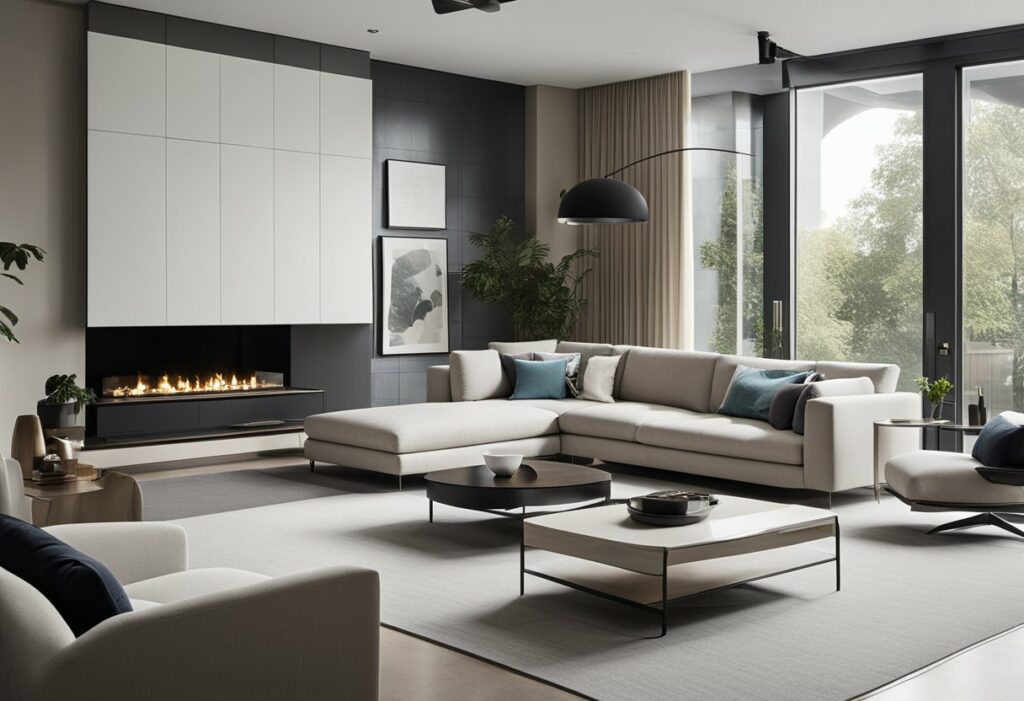
One of the most important aspects of modern interior design is the use of colour and texture. Neutral colours such as white, black, and grey are often used as a base, while pops of bold colours can be added through artwork or accent pieces. Texture is also important, with materials such as wood, metal, and concrete being popular choices. Furniture and decor should be simple and functional, with a focus on clean lines and minimalism. Lighting and space are also key considerations, with natural light being encouraged where possible and artificial lighting used to create a warm and inviting atmosphere.
The Evolution of Modern Design
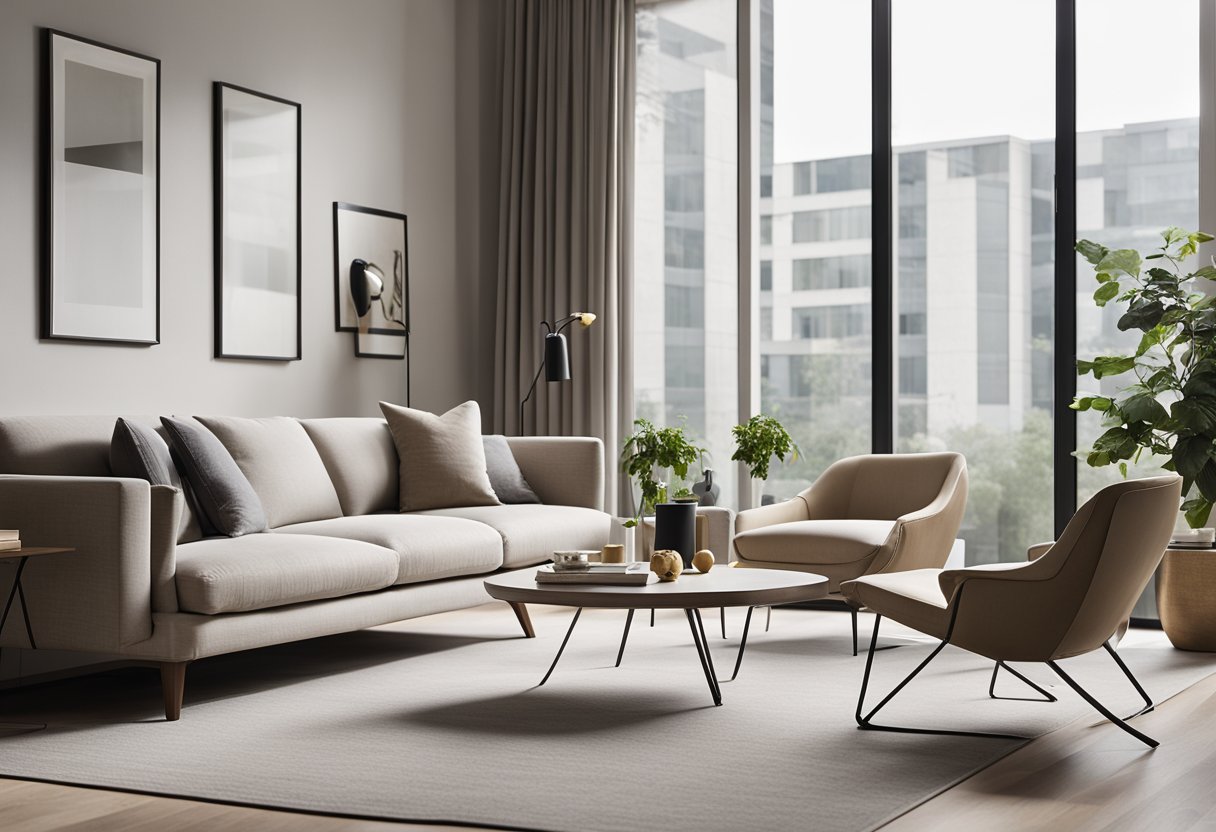
Origins and Modernism
If you’re wondering where modern design originated from, you’re not alone. The roots of modern design can be traced back to the early 20th century, when a group of designers and artists sought to break away from traditional design styles and create something new. This movement, known as modernism, was characterised by a focus on innovation, simplicity, and functionality.
One of the most influential figures in the modernist movement was the German architect and designer Walter Gropius, who founded the Bauhaus school in 1919. The school brought together artists, architects, and designers from different backgrounds and disciplines, with the aim of creating a new type of art and design that was both functional and beautiful.
Another key figure in the development of modern design was the American designer Charles Eames. Along with his wife Ray, Eames created a range of iconic furniture designs that are still popular today. Their designs were characterised by their simplicity, functionality, and use of new materials, such as moulded plywood.
20th Century Milestones
The 20th century saw many milestones in the evolution of modern design. In the 1920s and 30s, the Art Deco movement brought a new level of glamour and luxury to design, with its use of bold colours, geometric shapes, and intricate patterns.
In the mid-20th century, the focus shifted towards creating functional and affordable designs for the masses. Companies such as Herman Miller became known for their innovative furniture designs, such as the iconic Eames Lounge Chair, which combined comfort, style, and affordability.
As the century progressed, modern design continued to evolve, with designers experimenting with new materials, shapes, and technologies. Today, modern design is characterised by its clean lines, simplicity, and functionality, and is still popular with those who appreciate its timeless style and practicality.
Key Principles of Modern Interior Design
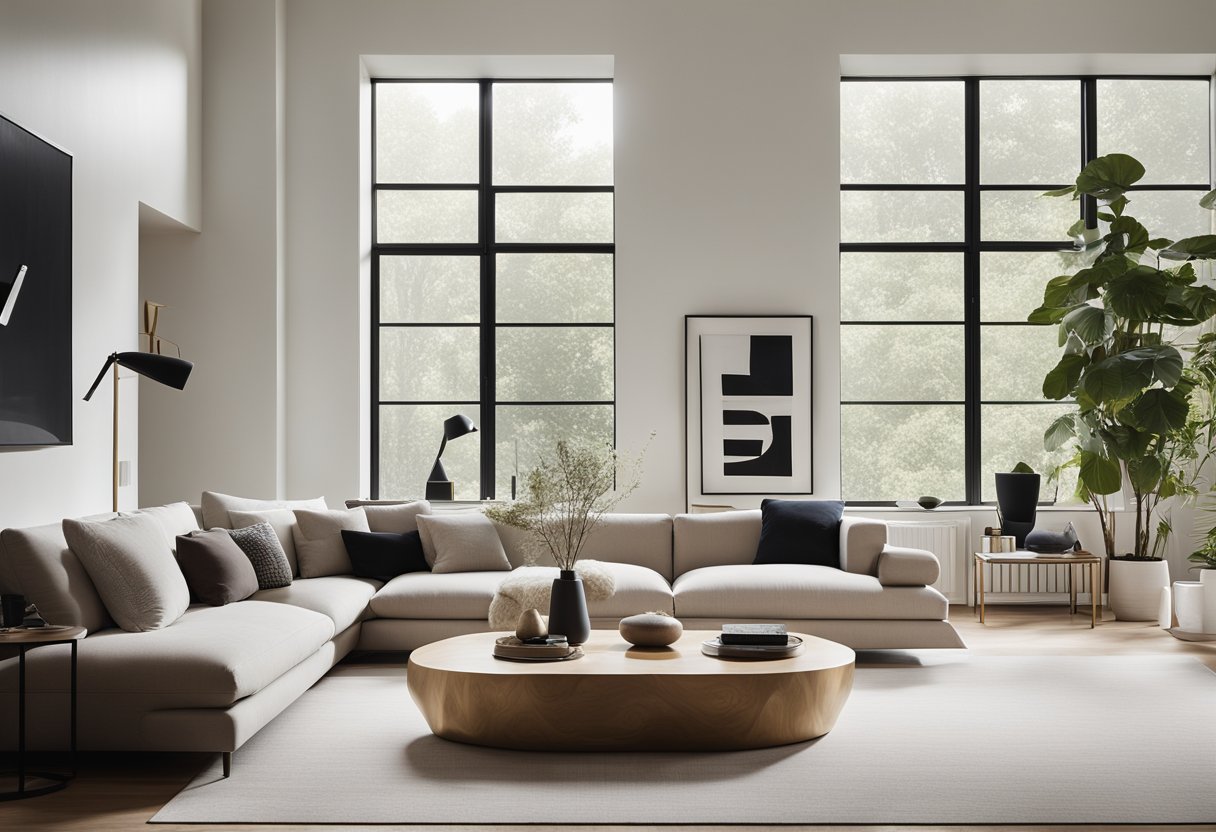
If you are looking to create a modern interior design, there are several key principles that you should keep in mind. These principles are focused on creating a space that is both aesthetic and functional, with a focus on simplicity, functionality, and clean lines.
Simplicity and Functionality
One of the most important principles of modern interior design is simplicity. This means that you should aim to create a space that is free of unnecessary clutter and distractions. Instead, focus on creating a space that is functional, with furniture and decor that serve a specific purpose.
Form Follows Function
Another key principle of modern interior design is that form follows function. This means that the design of a space should be driven by its intended use. For example, if you are designing a home office, you should focus on creating a space that is conducive to work, with a comfortable chair, a functional desk, and good lighting.
Clean Lines and Open Spaces
Clean lines and open spaces are also essential to modern interior design. This means that you should aim to create a space that is uncluttered and open, with furniture and decor that have simple, clean lines. This can help to create a sense of flow and harmony in the space, making it feel more inviting and welcoming.
In summary, modern interior design is all about creating a space that is both functional and aesthetically pleasing. By focusing on simplicity, functionality, and clean lines, you can create a space that is both beautiful and practical, with a focus on form following function. So, whether you are designing a home office, a living room, or a bedroom, keep these principles in mind to create a modern, inviting space that you will love spending time in.
Colour and Texture in Modern Design
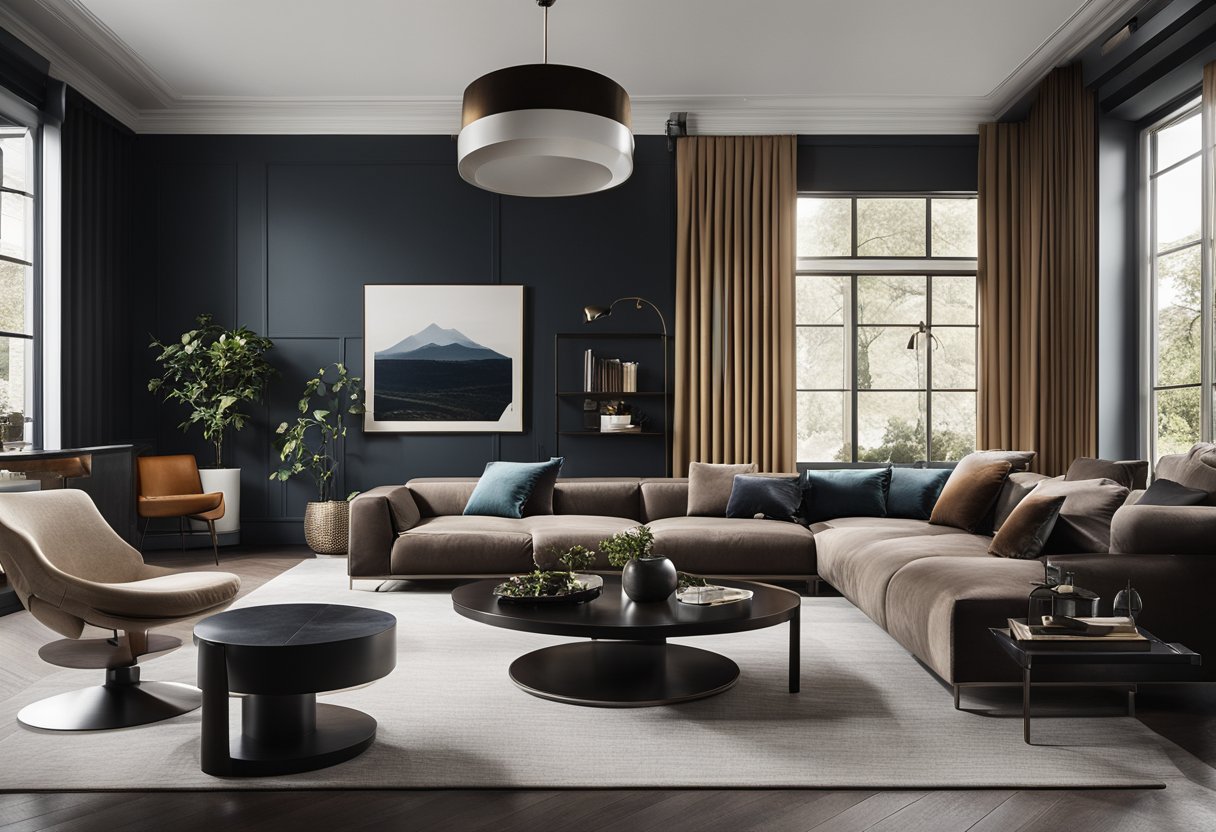
When it comes to modern interior design, the use of colour and texture is essential to create a cohesive and visually appealing space. A neutral colour palette is commonly used as a foundation for modern design, with accents of bold colours added to create interest and depth. In addition to colour, the use of texture and natural materials is also important to add warmth and character to a modern space.
Neutral Colour Palette and Accents
A neutral colour palette is a hallmark of modern design, with shades of white, grey, and beige used to create a clean and sophisticated look. These colours provide a blank canvas for pops of colour to be added, such as a bold red or blue accent wall, or a vibrant piece of artwork. This creates a balanced and harmonious space that is both calming and invigorating.
Incorporating Texture and Materials
Texture is an important element in modern design, as it adds depth and interest to a space. Layered textures can be used to create a warm and inviting atmosphere, such as a plush rug on a hardwood floor or a woven throw on a leather sofa. Natural materials such as wood, stone, and metal can also be incorporated to add warmth and character to a modern space.
When it comes to modern design, the key is to strike a balance between simplicity and interest. A neutral colour palette provides a foundation for bold accents, while texture and natural materials add warmth and character to a space. By incorporating these elements into your modern design, you can create a space that is both visually appealing and inviting.
Furniture and Decor
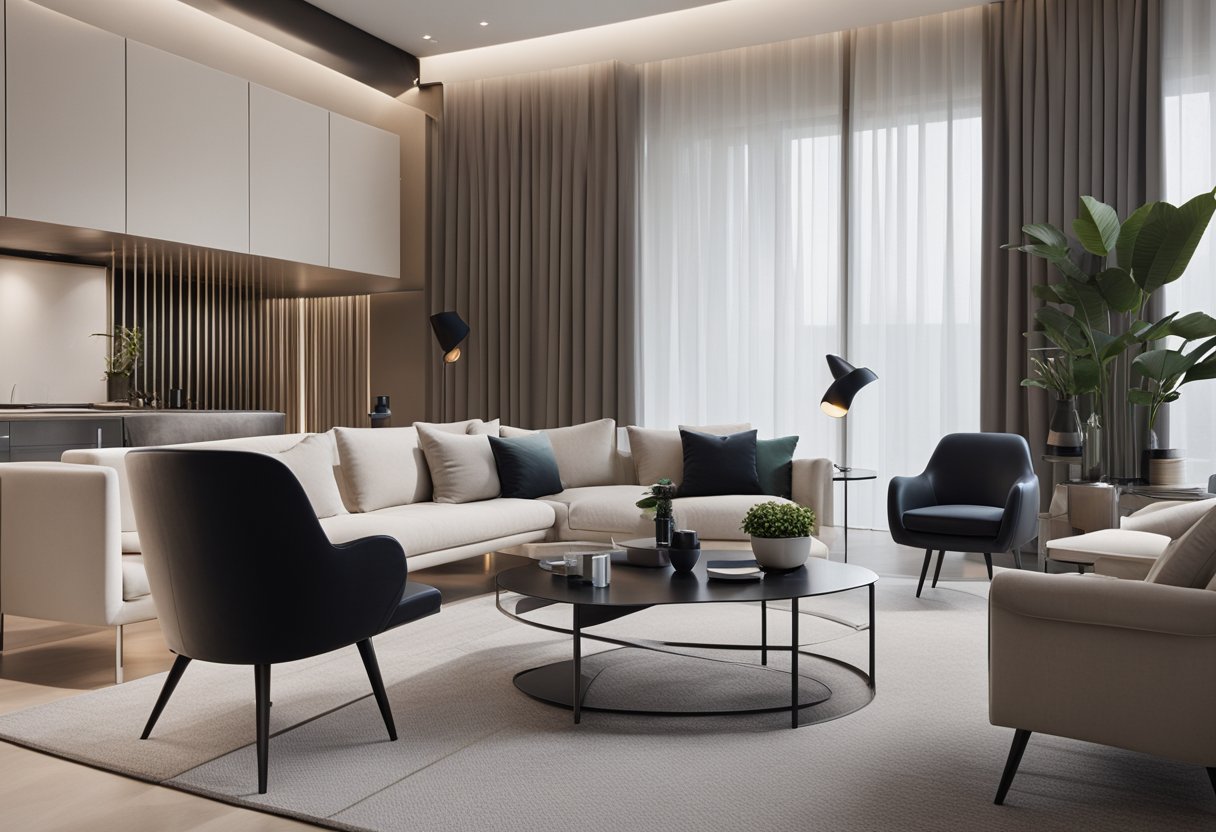
When it comes to modern interior design, furniture and decor are essential elements that can elevate your space to the next level. Here are some iconic furniture pieces and modern decor elements that can help you achieve a contemporary look and feel.
Iconic Furniture Pieces
Modern interior design is all about embracing simplicity, clean lines, and functionality. Iconic furniture pieces like the Barcelona Chair, Eames Lounge Chair, and the Tulip Table are perfect examples of how timeless design can be incorporated into modern interiors. These pieces are not only aesthetically pleasing but also comfortable and functional.
Leather is also a popular material used in modern furniture design. It adds a touch of elegance and sophistication to any space. A leather sofa or armchair can be a perfect focal point in a modern living room.
Modern Decor Elements
Modern decor elements are all about creating a harmonious and balanced space. Scandinavian design, which is known for its minimalism and functionality, is a perfect example of how modern decor can be achieved. Using geometric shapes and neutral colours, you can create a serene and inviting space.
Steel is another material that is often used in modern decor. It adds an industrial yet elegant touch to any space. Incorporating steel elements like a steel coffee table or pendant light can add a touch of sophistication to your modern interior.
Focal points are also important in modern interior design. A piece of art or a unique decor item can be a perfect focal point in a modern space. It can add personality and character to your space while still maintaining a contemporary look and feel.
Overall, furniture and decor play a significant role in modern interior design. By incorporating iconic furniture pieces and modern decor elements, you can achieve a sleek and sophisticated space that is both functional and aesthetically pleasing.
Lighting and Space
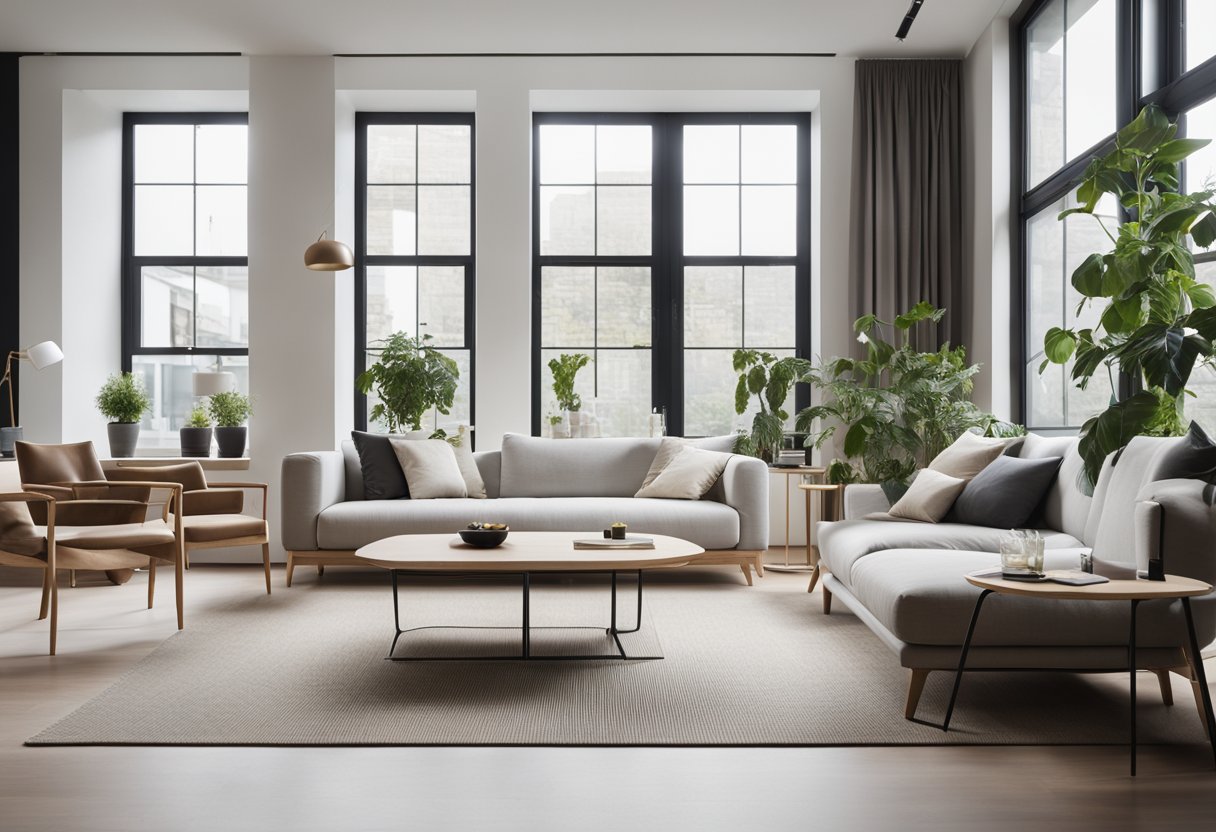
When it comes to modern interior design, lighting plays a crucial role in creating a space that is both functional and visually appealing. By maximising natural light and strategically placing lighting fixtures, you can transform any room into a bright and welcoming space.
Maximising Natural Light
One of the key elements of modern interior design is maximising natural light. Large windows are a great way to bring in natural light and create a sense of openness in a space. They can also help to reduce the need for artificial lighting during the day.
To make the most of natural light, it’s important to choose window treatments that allow light to filter through. Sheer curtains or blinds are a great option, as they provide privacy while still allowing natural light to enter the room.
Strategic Lighting Fixtures
In addition to natural light, strategic lighting fixtures can help to create a modern and functional space. Open floor plans, for example, can benefit from overhead lighting fixtures that provide illumination throughout the space.
When selecting lighting fixtures, it’s important to consider both function and style. Pendant lights are a popular choice for modern interior design, as they provide both task lighting and a stylish statement piece.
Table lamps and floor lamps are also great options for adding ambient lighting to a space. They can be used to create a warm and inviting atmosphere, and can be easily moved around to suit your needs.
By maximising natural light and strategically placing lighting fixtures, you can create a modern and functional space that is both welcoming and visually appealing.
Materials and Elements
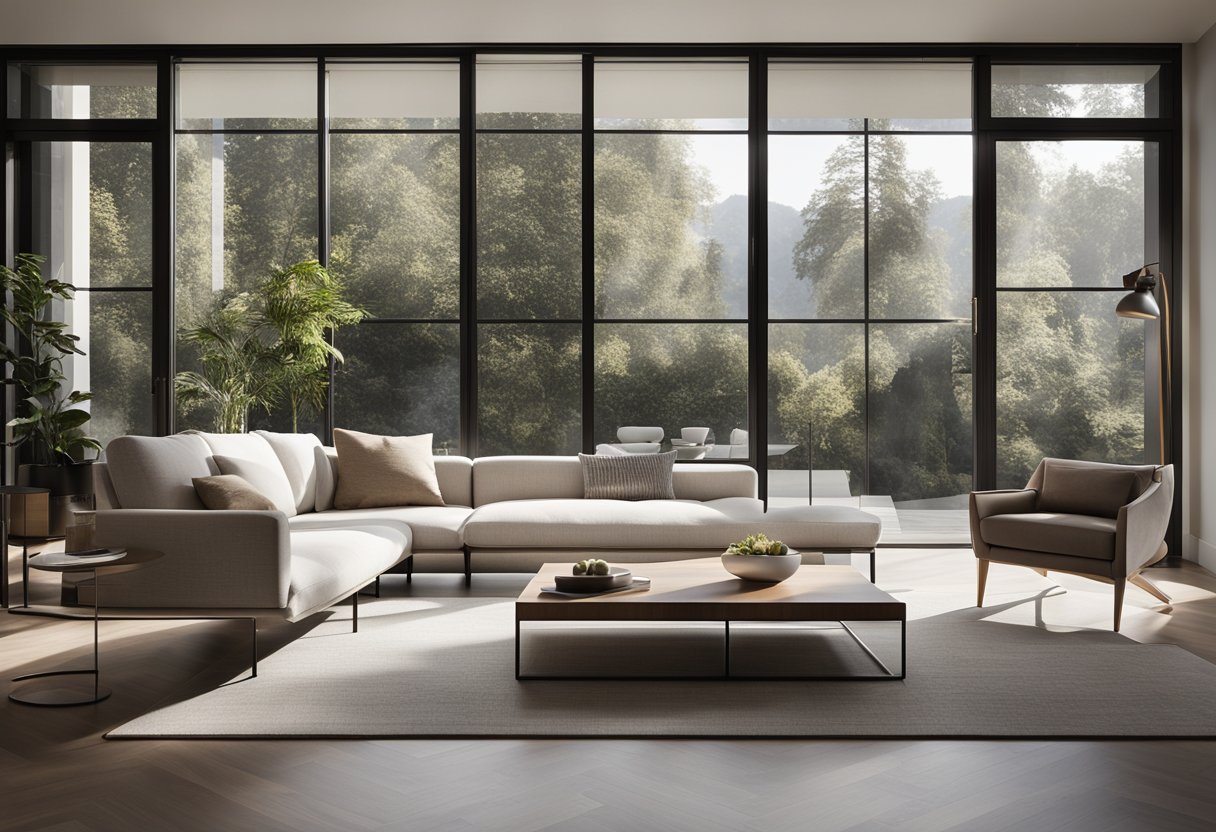
When it comes to modern interior design, the materials and elements you choose can make all the difference. From metal and glass to natural and industrial materials, selecting the right materials can help you achieve the look and feel you desire.
Metal, Glass, and Wood
Metal, glass, and wood are three of the most popular materials used in modern interior design. Metal is often used for accents and fixtures, such as light fixtures, door handles, and furniture legs. Glass is a great choice for modern interiors because it adds a sleek and sophisticated look, while also allowing natural light to flow through the space. Wood is another popular choice, especially for flooring, furniture, and accent walls. Natural wood adds warmth and texture to a space, while also creating a sense of comfort and relaxation.
Natural and Industrial Materials
In addition to metal, glass, and wood, natural and industrial materials are also commonly used in modern interior design. Brick, for example, is a popular choice for accent walls, creating an industrial and rustic feel. Natural elements like wood and stone can also be used to create an earthy and organic look. Industrial materials like chrome and stainless steel can add a modern and sleek touch to a space.
When selecting materials and elements for your modern interior design, it’s important to consider the overall look and feel you want to achieve. Whether you prefer a sleek and modern look or a more natural and organic feel, there are plenty of materials and elements to choose from that can help you achieve your desired aesthetic.
Incorporating Nature
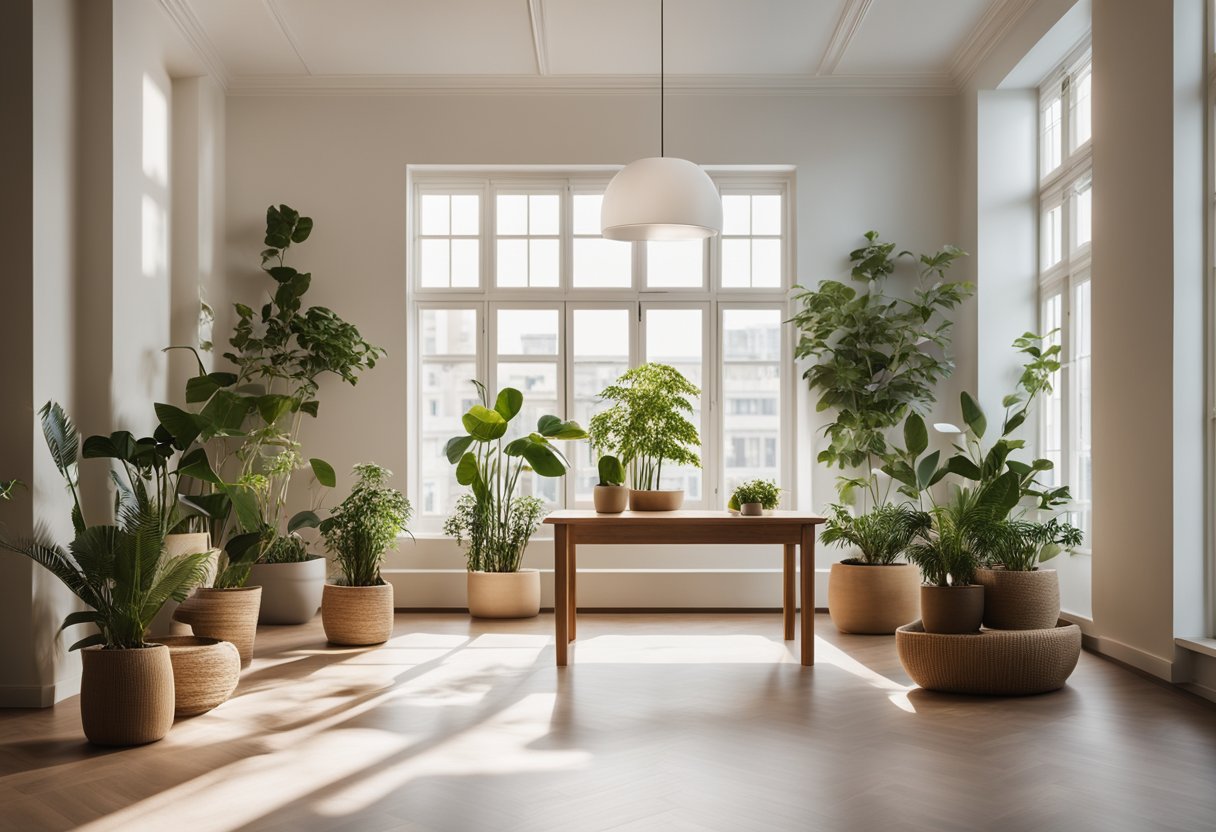
If you’re looking to add a touch of freshness and tranquillity to your modern interior design, incorporating nature is an excellent way to achieve this. Here are some ideas to help you bring the outdoors inside.
Greenery and Organic Forms
One of the most common ways to incorporate nature into modern interior design is by adding greenery. Plants are not only aesthetically pleasing, but they also help purify the air and create a sense of calmness. You can incorporate plants in various ways, such as hanging them from the ceiling, placing them on shelves, or even creating a living wall.
Another way to bring in organic forms is by using natural woven elements. Rattan, wicker, or bamboo furniture pieces can add a touch of nature to your modern interior design. These materials are not only sustainable but also add a warm and welcoming feel to a space.
Blending Indoors and Outdoors
To create a seamless transition between indoors and outdoors, consider adding large windows or glass doors that allow natural light to enter. This not only brings in the beauty of the outdoors but also creates a sense of openness and spaciousness.
Another way to blend indoors and outdoors is by creating an outdoor living space that flows seamlessly into your indoor space. You can achieve this by using similar colours, materials, and textures in both spaces. For example, if you have a wooden deck outside, consider using a similar wood finish on your indoor floors.
Incorporating nature into your modern interior design is a great way to create a relaxing and inviting space. By adding greenery, organic forms, and creating a seamless transition between indoors and outdoors, you can achieve a modern and natural look that is both beautiful and functional.
Modern Styles and Movements
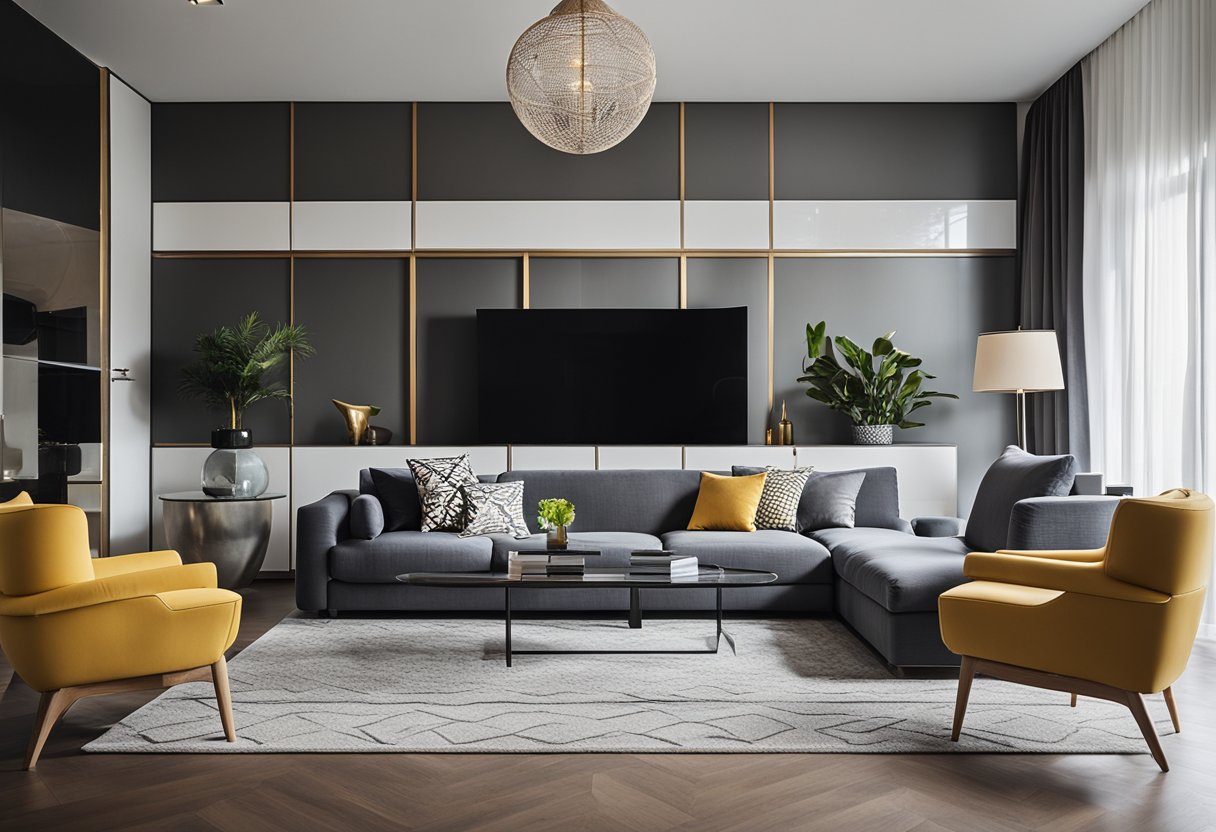
When it comes to modern interior design, there are several styles and movements that you can draw inspiration from. Here are some of the most popular ones:
Scandinavian Minimalism
Scandinavian minimalism is all about simplicity, functionality, and understated elegance. This style is characterised by clean lines, neutral colours, and natural materials such as wood and leather. It’s a great choice if you want to create a calm and peaceful atmosphere in your home.
Industrial and Art Deco
Industrial and Art Deco design styles are both inspired by the early 20th century. Industrial design is characterised by exposed brick walls, metal pipes, and utilitarian furniture, while Art Deco is all about glamour, luxury, and bold geometric shapes. These two styles can be combined to create a unique and edgy look.
Eclectic and Midcentury Modern
If you’re looking for a more eclectic and playful style, you can draw inspiration from midcentury modern and eclectic design. Midcentury modern design is characterised by organic shapes, bold colours, and a mix of materials such as metal, plastic, and wood. Eclectic design, on the other hand, is all about mixing and matching different styles, colours, and patterns to create a unique and personalised look.
No matter which style you choose, modern interior design is all about creating a space that reflects your personality and lifestyle. Whether you prefer minimalism, industrial design, or something more eclectic, there’s a modern style out there that’s perfect for you.
Designing for Comfort and Lifestyle
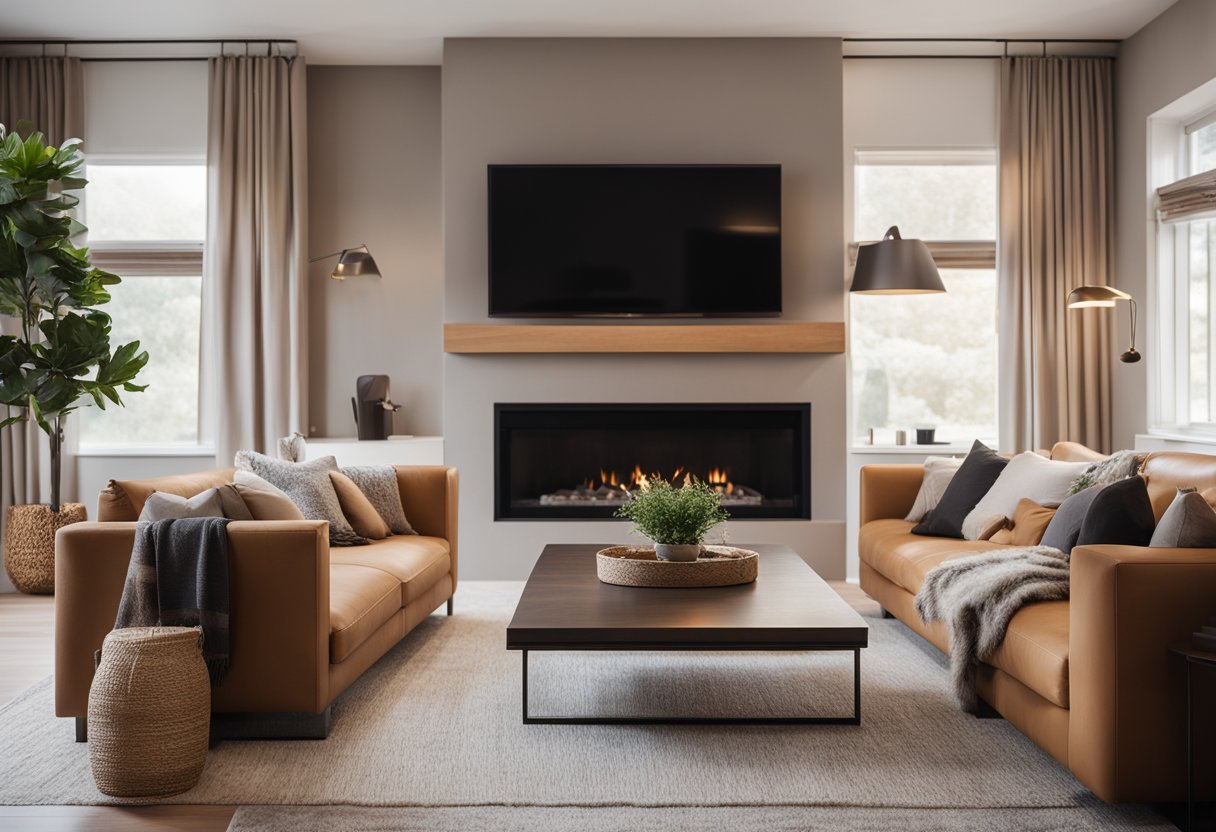
Designing your home with modern interior design is all about creating a comfortable and inviting space that reflects your personal style and lifestyle. Here are some tips on how to achieve that:
Comfortable and Inviting Spaces
When it comes to modern interior design, comfort is key. You want to create a space that feels welcoming and relaxing, while still looking stylish and modern. This can be achieved through the use of soft furnishings, such as cushions and throws, as well as comfortable seating options like sofas and armchairs.
In addition to creating a comfortable environment, you also want to make your space inviting for guests. This can be achieved through the use of warm lighting, such as table lamps and floor lamps, as well as the use of natural materials like wood and stone.
Personalisation and Function
One of the great things about modern interior design is that it allows you to personalise your space to reflect your own unique style and personality. This can be achieved through the use of artwork, photographs, and other decorative items that showcase your interests and passions.
At the same time, you also want to make sure that your space is functional and practical. This means choosing furniture and accessories that serve a purpose, such as storage solutions that help to keep your space organised and clutter-free.
Overall, designing your home with modern interior design is all about creating a space that is both comfortable and functional, while also reflecting your own personal style and lifestyle. By following these tips, you can create a space that you will love spending time in and that will be inviting to guests.
Sustainable and Innovative Design
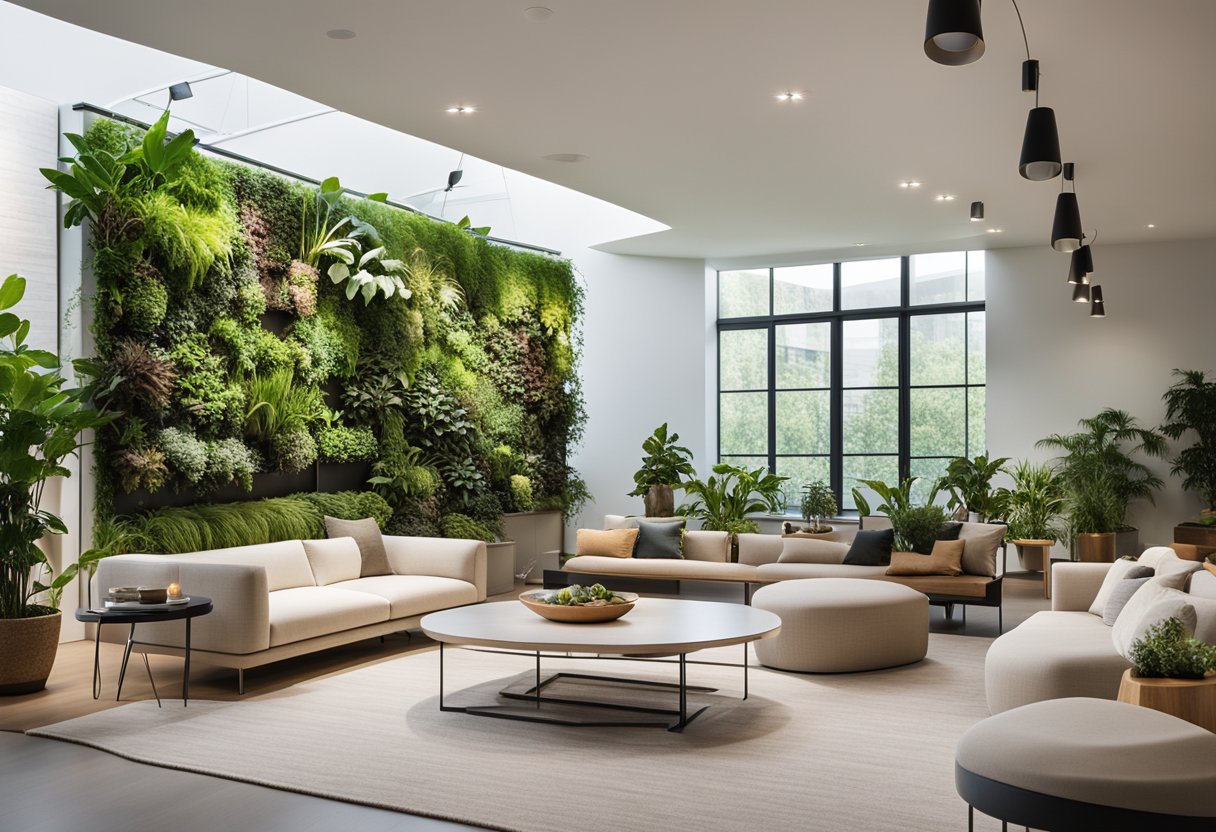
As our world becomes more conscious of the impact we have on our environment, sustainable design has become an increasingly important aspect of modern interior design. In this section, we’ll explore some of the ways in which sustainability and innovation intersect in modern design.
Sustainability in Modern Design
Sustainability is all about creating designs that are environmentally friendly, economically viable, and socially responsible. In modern interior design, this means using materials that are renewable, recyclable, and non-toxic. Some examples of sustainable materials include reclaimed wood, bamboo, and recycled glass.
In addition to using sustainable materials, modern interior designers also focus on creating designs that are energy-efficient. This can be achieved through the use of LED lighting, smart thermostats, and other energy-saving technologies.
Technological Integration
Innovation and technology play a key role in modern interior design. From smart home systems to 3D printing, designers are constantly exploring new ways to integrate technology into their designs.
One example of this is the use of virtual reality (VR) technology to create immersive experiences for customers. By allowing customers to see and experience a design before it’s built, designers can ensure that their vision is realised and that the final product meets the customer’s needs.
Another example of innovative technology in modern interior design is the use of 3D printing to create custom furniture and decor. This technology allows designers to create unique, one-of-a-kind pieces that are tailored to the specific needs of their clients.
Overall, sustainability and innovation are two key aspects of modern interior design. By incorporating these principles into their designs, designers can create beautiful, functional spaces that are environmentally friendly, economically viable, and socially responsible.
Tips and Considerations
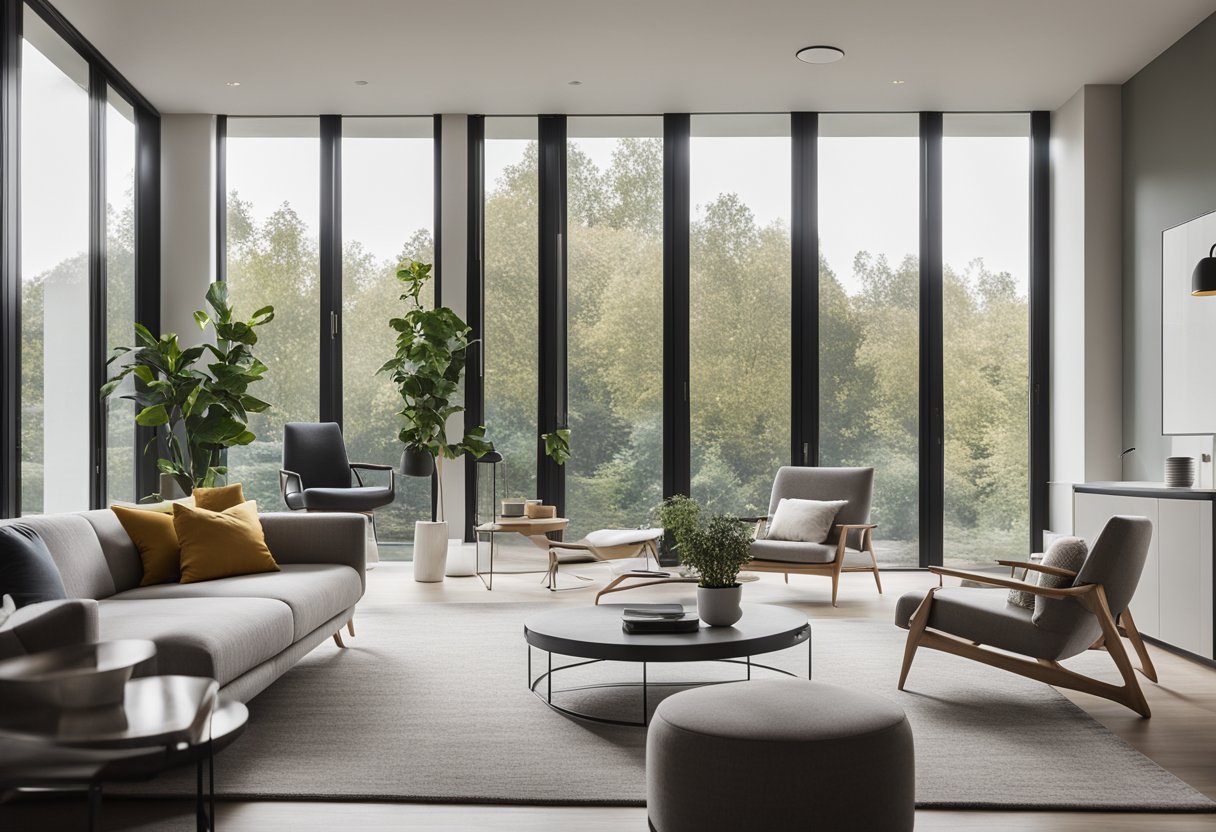
Decluttering and Organisation
When it comes to modern interior design, decluttering and organisation are key. A minimalist approach with clean lines and open spaces is a hallmark of modern design. To achieve this, you need to get rid of unnecessary items and keep only what you need.
Start by going through your belongings and getting rid of anything that doesn’t serve a purpose or bring you joy. Consider investing in smart storage solutions to keep your space organised and clutter-free.
Choosing the Right Colours and Textures
Neutral colours are a staple of modern interior design. They create a clean, calming atmosphere and provide a great backdrop for pops of colour. When choosing colours, consider the mood you want to create.
For a calming atmosphere, stick to muted shades of blue, green, and grey. If you want to add a pop of colour, try incorporating bold accents in red, yellow, or orange.
Textures are also important in modern design. Mixing textures can add depth and interest to a space. Consider incorporating materials like wood, metal, and glass to create a balanced look.
Balancing Form and Function
Modern interior design is all about finding the balance between form and function. Furniture should be both stylish and practical. Look for pieces that are simple, yet elegant.
Consider investing in multi-functional pieces like a sofa bed or a coffee table with hidden storage. This will help maximise your space and make it more functional.
When choosing decor, consider how it will be used. Art should be both beautiful and meaningful, and lighting should be both stylish and functional.
By following these tips and considerations, you can create a modern interior design that is both stylish and functional. Remember to keep things simple, stick to neutral colours, mix textures, and find the balance between form and function.
Conclusion
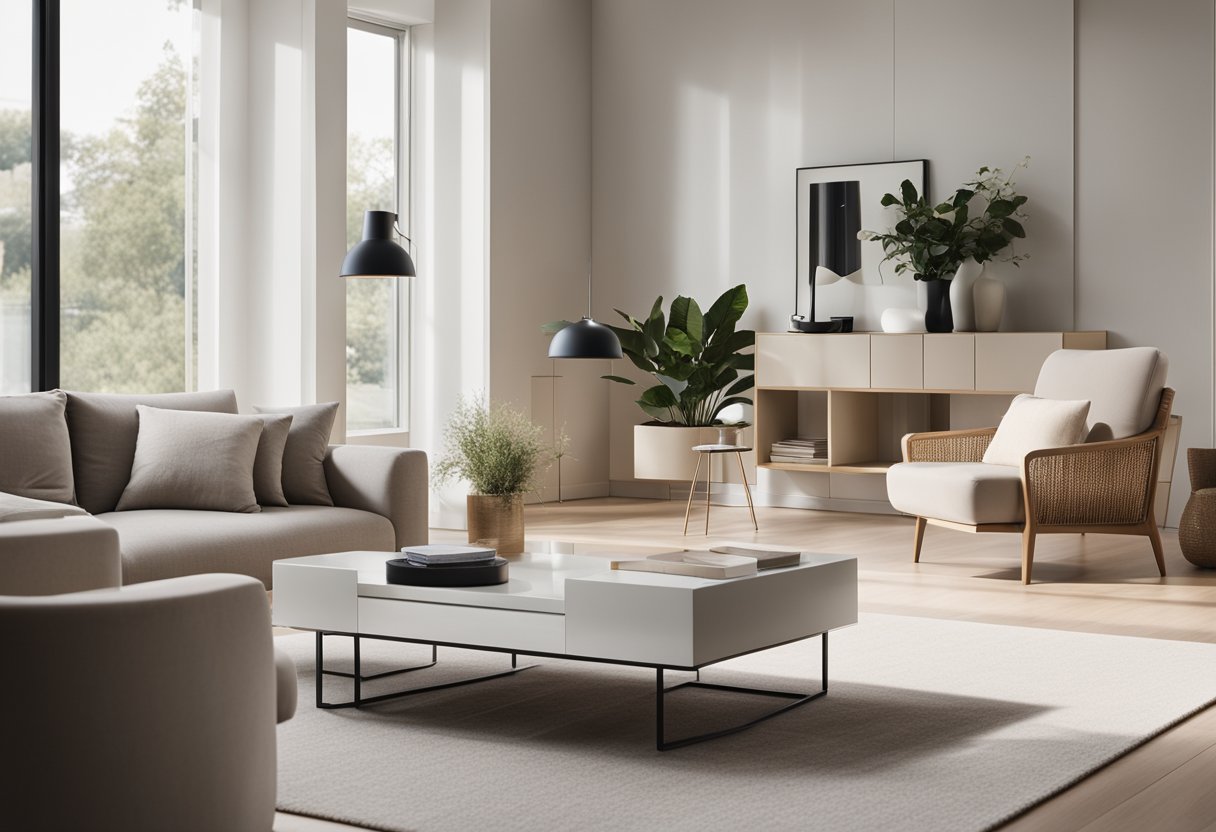
Congratulations! You’ve now learned all about modern interior design and how it can transform any space into a stylish and functional home. By incorporating minimalist aesthetics, natural materials, and smart design features, you can create a comfortable and inviting living environment that is perfect for the modern urban lifestyle.
When it comes to modern interior design, there are many different styles and approaches you can take. From contemporary interior design to more traditional styles, there is something for everyone. The key is to find a style that reflects your personality and lifestyle, while also incorporating the latest trends and design elements.
Whether you’re looking to create a sleek and sophisticated living room, a cosy and inviting bedroom, or a functional and stylish kitchen, modern interior design can help you achieve your goals. By using a combination of clean lines, neutral colours, and natural materials, you can create a space that is both timeless and contemporary.
So why wait? Start exploring the world of modern interior design today and discover how you can transform your home into a stylish and functional space that reflects your unique personality and lifestyle.
Frequently Asked Questions
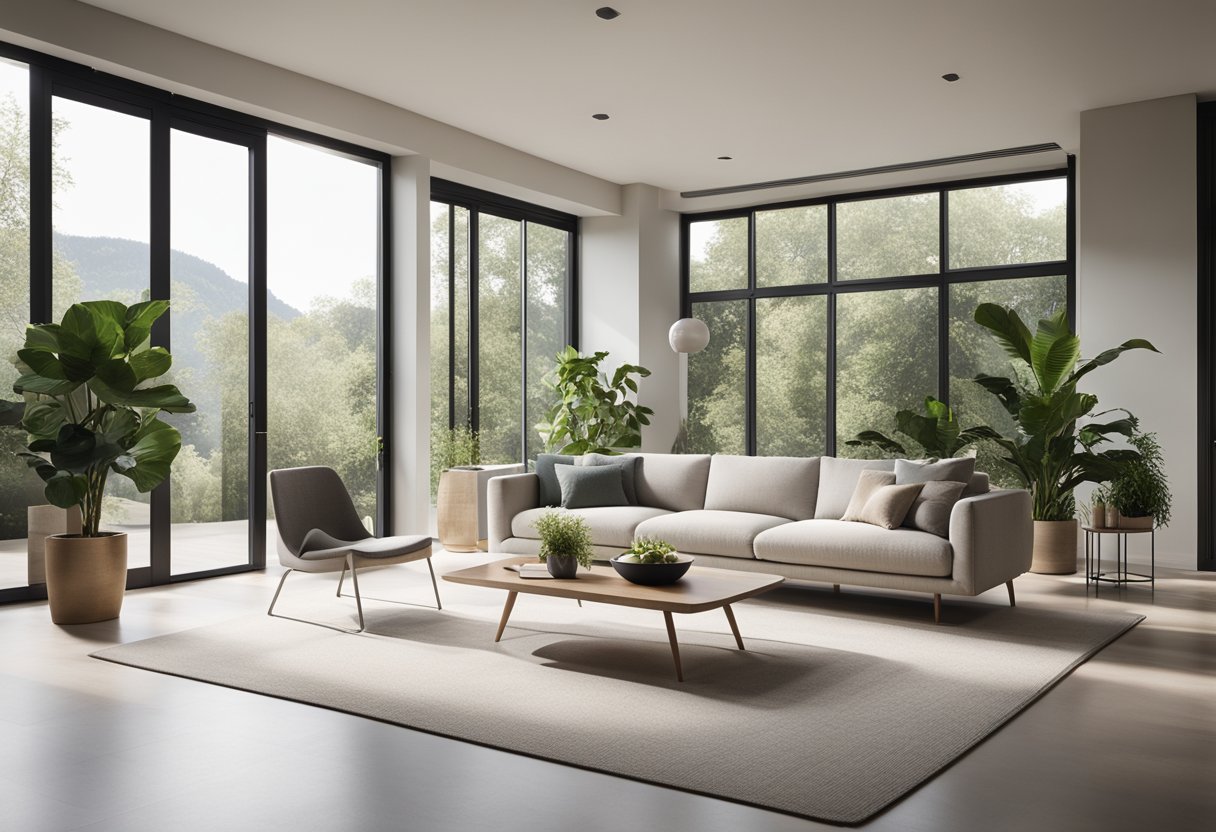
What are the latest trends in interior design for a vibrant living space?
If you’re looking to add some vibrancy and life to your living space, there are a few trends in modern interior design that you might want to consider. One of the most popular trends right now is the use of bold colours and patterns. Think bright yellows, deep blues, and geometric shapes. Another trend is the incorporation of natural materials, such as wood and stone, to create a warm and inviting atmosphere.
Which materials are currently popular for achieving a sleek, modern home aesthetic?
When it comes to achieving a sleek, modern home aesthetic, there are a few materials that are currently popular. One of the most popular materials is concrete, which can be used for everything from floors to countertops. Another popular material is metal, which can be used for everything from light fixtures to furniture. Glass is also a popular material, particularly for creating a sense of openness and spaciousness.
How can one infuse modern elegance into their living room decor?
Infusing modern elegance into your living room decor can be as simple as adding a few key pieces. Start by choosing a neutral colour palette, such as white or grey, and then add in some accent pieces, such as a bold rug or a statement piece of art. Consider incorporating natural materials, such as wood or stone, to add warmth and texture to the space. Finally, don’t be afraid to mix and match different styles and textures to create a truly unique look.
Could you suggest some innovative ideas for modernising my home interior?
There are many innovative ideas for modernising your home interior. One idea is to incorporate smart home technology, such as automated lighting or a voice-activated assistant. Another idea is to create a multi-functional space, such as a guest room that can also be used as a home office. Finally, consider incorporating sustainable materials, such as bamboo or recycled glass, to create a more eco-friendly home.
In what ways does modern interior design differ from contemporary styles?
While modern and contemporary styles are often used interchangeably, there are some key differences between the two. Modern interior design typically refers to a specific time period, namely the mid-20th century, and is characterised by clean lines, minimalism, and a focus on function over form. Contemporary interior design, on the other hand, refers to the current design trends and is characterised by a more eclectic mix of styles and a greater emphasis on individuality and personal expression.
What elements define a luxurious modern interior in today’s homes?
A luxurious modern interior in today’s homes is characterised by a few key elements. First and foremost is the use of high-quality materials, such as marble, leather, and brass. Another key element is the incorporation of technology, such as smart home systems and state-of-the-art entertainment centres. Finally, a luxurious modern interior is characterised by a sense of openness and spaciousness, often achieved through the use of large windows and open floor plans.


